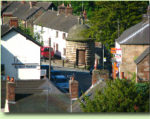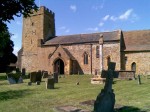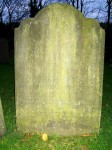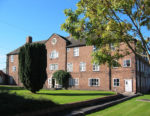
Alton, Staffordshire
When you are next thinking about where to go on holiday, why not try an ancestral trail, and visit the homes and places where your ancestors lived and worked? If you have done a lot of research, and have some idea of where they lived and what they did, visiting your ancestors can give you a richer understanding of their lives, as well as a real emotional connection to them.
PLAN YOUR TRIP
Before setting off on your trip, you need to do a bit of planning first. First of all, you want to find out whether the houses they lived in still exist. For the late 19th and early 20th centuries, specific addresses can be found on most of the later census records, on birth, marriage and death records, and on electoral registers. Earlier addresses may not always be so easy to find unless the place they lived in was a large, well-known house, a pub, or a farm.
Be very careful with house numbers, as these have not always remained the same over the years. Check on old maps on the internet and do some research to see if house numbering on your street has changed over the years. You don’t want to find that you’ve had your photo taken outside the wrong house!
You should also plan to visit the other important places of your ancestors’ lives, so check the opening times of the local church, the pub and any nearby museums which will give you information on local life. Nowadays, these is really easy to do online. You might find that some churches are locked when there is no service, so find out if you can arrange an appointment to have someone unlock it and show you around. If your ancestors were non-conformist, then you should try and find out where their nearest chapel would be, and if it still stands.
If your ancestors lived in more than one place within a given area, then plan your trip accordingly, moving from one place to another.
ANCESTRAL HOMES

My ancestors’ house in Manchester
Depending on the type of house your ancestor lived in, it may not be always easy to visit a residence. If this is in a large town or city, the chances are the whole area will have been completely demolished to make way for modern roads or railways. This is very much the case for those of my ancestors who lived in Birmingham, where the street where they lived is now a dual carriageway! This can be disappointing, but you can still sometimes find older parts of the city to give you an idea of what your ancestor’s home might have looked like.
If the area you are visiting is more rural, you certainly have a better chance of finding the actual building your ancestors lived in, using old and new maps. Whether or not you want to risk knocking on a door to ask if you can look around, is totally up to you, but it might be more polite to write in advance, and don’t expect a positive response! If your ancestors lived before the 19th century, then you might not have a specific address, and you will have to look around to see the age and type of house they might have lived in. In most cases, the older parts of the village will be closer to the centre.
CHURCHES AND PUBS

St. Peter’s Church, Whatcote, Warwickshire
The most important part of your ancestral trail will probably be the church. Your ancestors will have been very well acquainted with the local parish church (or chapel if they were non-conformist), and so you will definitely want to visit this place where the most important events in their lives took place: baptism, marriage and burial. In most villages, the current church will probably have been there since at least Victorian times, and in many cases much earlier, so you have a good chance of seeing it as your ancestors would have done.
Inside most churches you will find information leaflets that you can buy for a small donation. This will give you the history of the church and village, and if you are lucky, might even mention one of your ancestors if they were important in the local community. Get a feel for the church inside, visiting the font where you ancestors were baptised, checking names on memorials inside, and then go outside and search the graveyard for your ancestors. This can be very rewarding, and some gravestones can give you further information than you had already. However, don’t be too surprised if you do not find your ancestor’s grave, even if you know they were buried there. In many cases, gravestones are either faded or covered with lichen, or they have been removed due to crumbling, or to make room for others.
 On my 4 x great-grandfather’s grave at Alton in Staffordshire, I found the following elegy (the light was fading when I was there, so the photograph is not that great!):
On my 4 x great-grandfather’s grave at Alton in Staffordshire, I found the following elegy (the light was fading when I was there, so the photograph is not that great!):
The …of Samuel Bott late of this Place. He departed this life Feb [2] 1833 aged 83 years. Also Jane his wife who died October 3 182… aged [68] years. Also Matilda Bott their granddaughter who died on the 22nd April 1833 Aged 12 years.
Here age and youth alike together lie,Which shows that … should be prepared to die, Therefore [know?] death may call full soon And take your life before you think it noon
If you do find the gravestone of a direct ancestor, you might be surprised at the rush of emotions that can suddenly knock you sideways unawares!
By now you should be in need of refreshment, so you should take yourself to the local pub (usually close to the church), noting its age and whether it would have been there in its present form when your ancestors were alive.
Don’t be shy. If it’s not too busy, tell the landlord of the pub why you are there. They may well be interested and have local information for you. You might even find there is some old local in there who remembers the village long ago and can tell you a few tales.
Most pubs have been modernised and redecorated several times since your ancestors’ days, but if they have been done with care and sensitivity, you might still find some of the atmosphere of old days, keeping historical features such as fireplaces or even an old settle upon which your ancestors might have sat and drank their jug of ale!
MUSEUMS
If there is a local museum, either in your ancestors’ village or town, or in a nearby place, you should definitely make time to visit. Local museums can give you a lot of information of life in your ancestors’ day, and perhaps show artefacts that your ancestors might have used in their day-to-day life or work. They will certainly have a lot of information and items concerning local industries which your ancestors may have been involved in, and also any big local events, such as a flood, a fire or even historical events such as Chartist riots. There is no doubt that all of these would have affected your ancestors, and you may learn much more about your ancestors than you ever have done through the usual genealogical records.
OTHER PLACES

Previous workhouse in Nantwich
Depending on what your previous research has uncovered, there may be other buildings still in existence that could be part of your ancestor’s life. If they got on the wrong side of the law, perhaps the courthouse or jail they attended is still in existence, even if it no longer serves the same purpose. Places of work or education, such as an old mill, or the local school, might still exist as a building, often now converted to other use. Also, if your ancestors were unfortunate enough to end up in the workhouse, you may find this building, which will now be used for something else such as a hospital or residential home. Your pre-planning should be able to find all these out before you visit.

